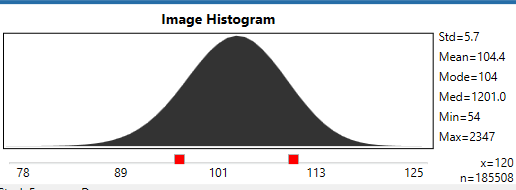
Fixed Pattern Noise Correction

Finger Lakes Instrumentation
200 Tech Park Drive
Rochester NY 14623 USA
200 Tech Park Drive
Rochester NY 14623 USA
Phone: 585-624-3760
Email: sales@flicamera.com
Web: https://flicamera.com
Email: sales@flicamera.com
Web: https://flicamera.com
©2024 Finger Lakes Instrumentation
Fixed pattern noise correction is removed by subtracting a master dark frame taken with the same gain, sensor temperature, and exposure time as the intended image. This is done by first identifying the gain, sensor temperature, and exposure time intended for the final image, then taking a completely dark image with those settings. The easiest way to do this is to cover the lens completely such that no light leaks and taking an image. The most important aspect of a dark image is that it is completely dark. Save this image, and title it with the exposure time, gain and sensor temperature. It is recommended to save any dark frames taken into a master dark frame library so it can be used again (See Advanced Topics).
With an appropriate master dark frame collected, the user can use the Post Process Panel to subtract the fixed pattern noise from images, or, the user may manually subtract the fixed pattern noise of a previously captured image, found at Manual Fixed Pattern Noise Correction.
Fixed-pattern Noise (FPN) is a term given to a noise pattern often generated during long exposures. This noise is generated when particular pixels are susceptible to producing brighter signals than the background noise.
FPN is visible when one takes an image with no noise correction, as seen in Figure 1, and an example of an image corrected for fixed pattern noise is shown as Figure 2.


Figure 1: Stacked frame, uncorrected
Figure 2: Stacked frame, corrected
